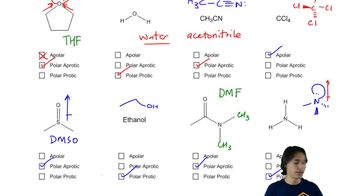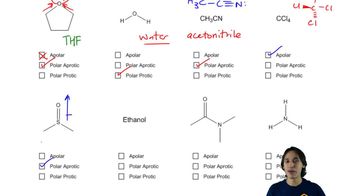Textbook Question
Indicate whether each of the following solvents is protic or aprotic:
c. acetic acid
d. hexane

 Verified step by step guidance
Verified step by step guidance Verified video answer for a similar problem:
Verified video answer for a similar problem:



 2:26m
2:26mMaster General format of reactions and how to interpret solvents. with a bite sized video explanation from Johnny
Start learning